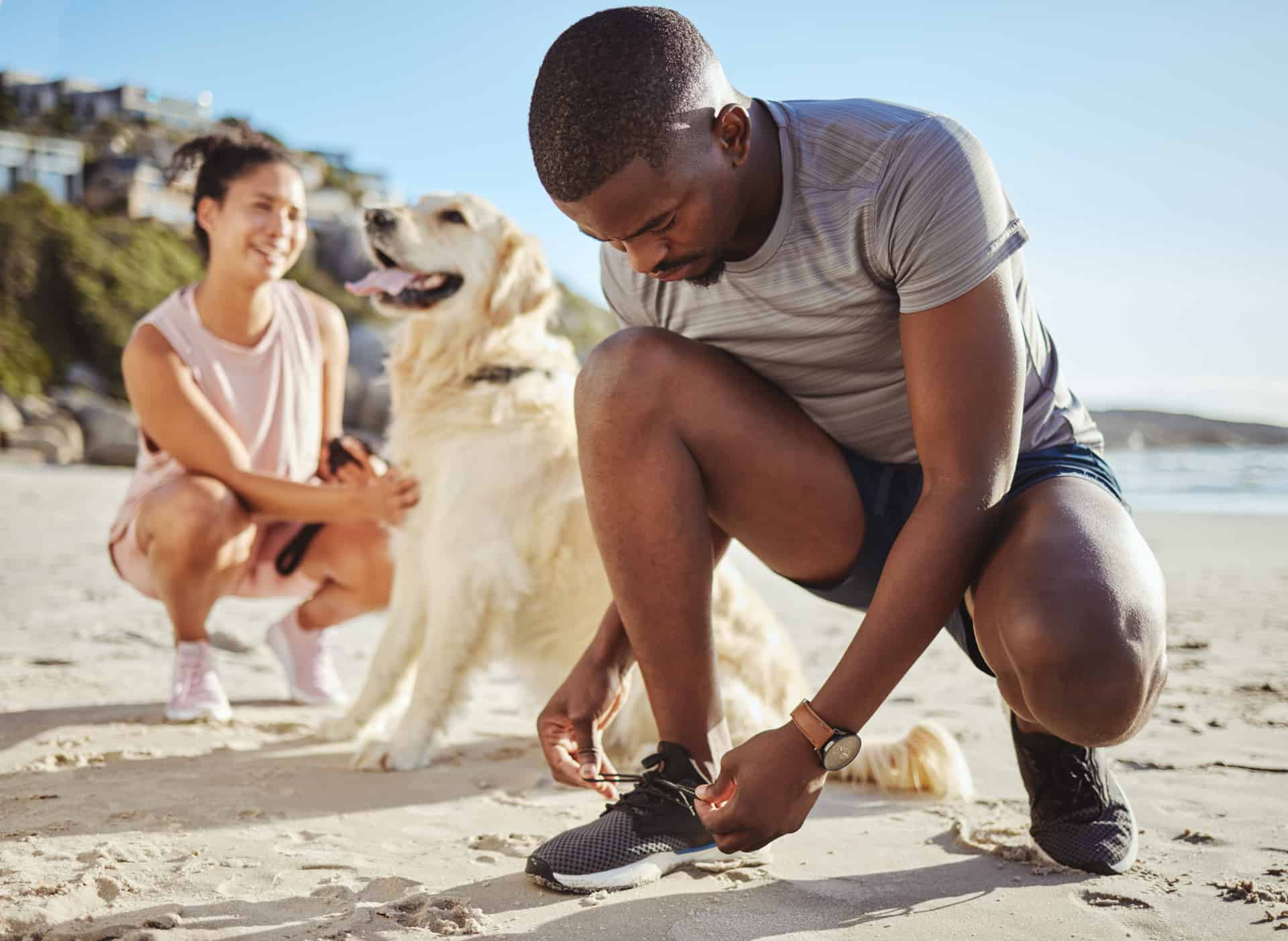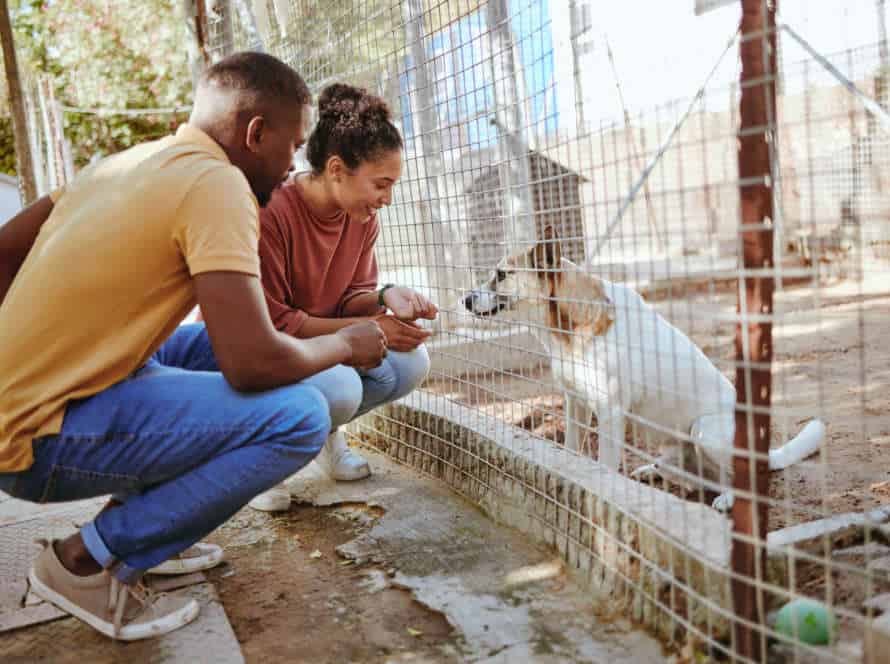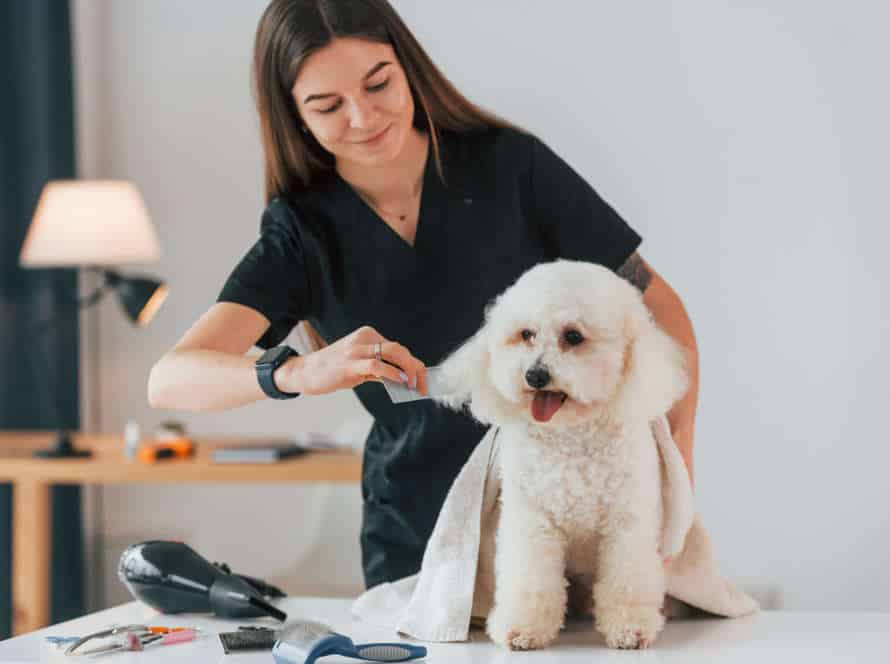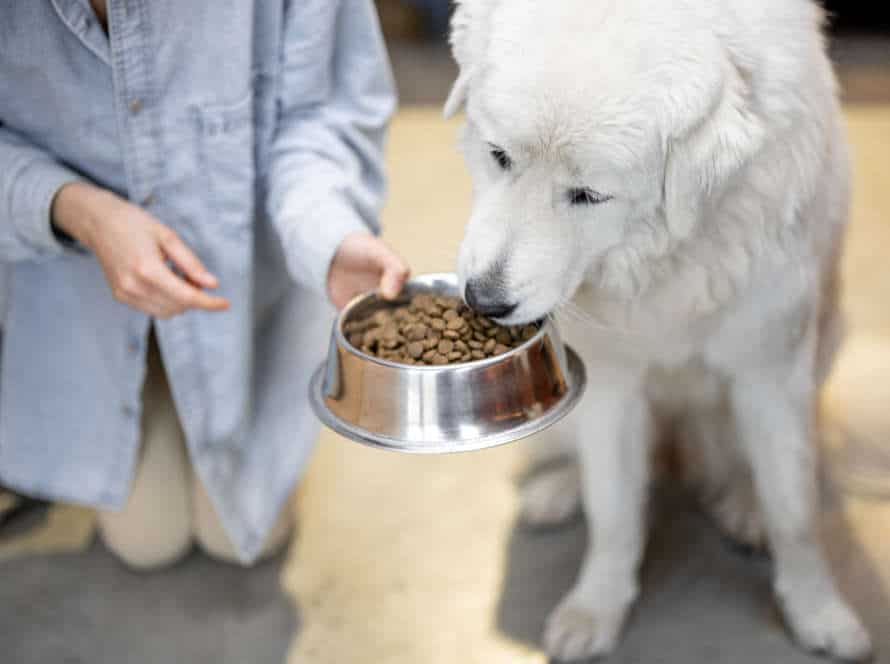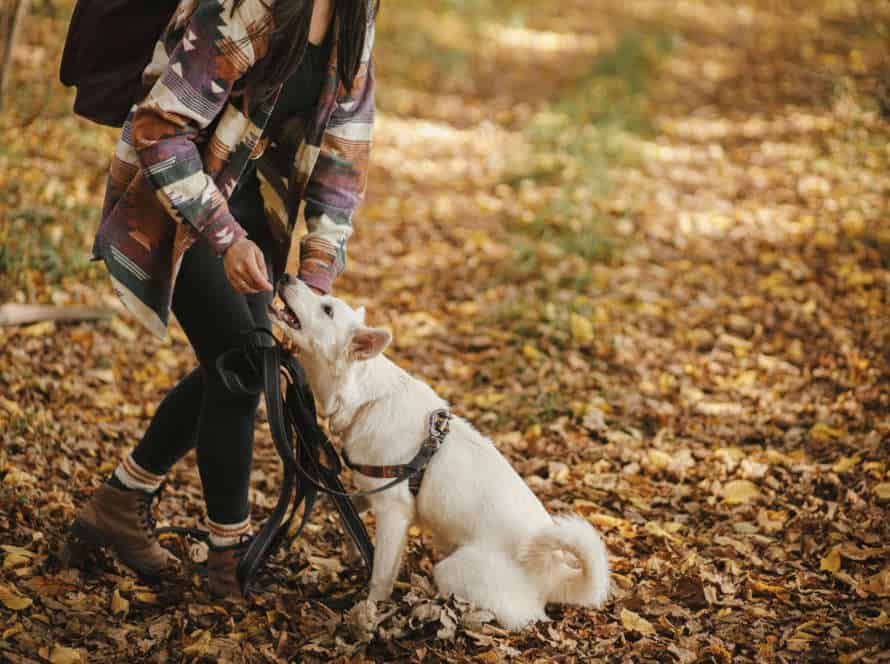Exploring New Exercise Options for Your Canine Companion
Exploring new exercises for your pup is not only fun but also great for their physical & mental health. Here are some ideas:
- Agility training: Perfect for active & energetic pooches. Involves jumps, tunnels & weave poles.
- Swimming: Low-impact & easy on joints. Especially great for those with arthritis or joint issues.
- Hiking: Great to explore outdoors and bond with your pup. Choose a trail that suits them.
- Fetch: Classic game of fetch. Easy & convenient to play anywhere & anytime.
- Consult with your vet before starting a new exercise regimen.
- Pro tip: Rotate exercises. Keeps the pup interested & engaged.
Benefits of Exercise for Dogs
Exercise is crucial for living beings, like our pup pals! Dogs must get physical activity to be healthy and mentally alert. Regular exercise benefits them by maintaining a healthy weight, stimulating the brain, reducing boredom, and even bettering behaviour. The rewards of exercising for dogs – let’s delve in!
Promotes Physical Health
Exercise is a must for dogs! It’s important for their physical and emotional health. Here are some of the benefits:
- Managing weight and avoiding obesity.
- Better cardiovascular health and immune system.
- Building bones, joints, and muscles.
- Stimulating their minds and reducing stress.
- Making them more social and helping them bond with their owners.
For new exercises, try hiking, swimming, agility training, and fetch. Pro tip: Talk to your vet first and tailor your pup’s routine to their age, breed, and health needs.
Helps with Behavioral Issues
Exercising regularly is an awesome method to help with many doggy behavior problems, like fear, aggression, and wrecking stuff. When pooches don’t get enough exercise, they can get physical and emotional issues. Here’s why exercise is great for dogs:
- Physically healthy: Exercise keeps a pup at the right weight, boosts their heart health, and gives their muscles tone.
- Mental stimulation: Going on walks, hikes, or playing fetch wakes up their senses and stops them from getting bored, lonely, or naughty.
- Socializing: Working out with other doggos or joining a class teaches your furry friend how to be around other canines and humans.
Try new exercise activities with your pup such as swimming, hiking, and agility training. Pro Tip: Before getting your pup into a new or more intense workout, chat with your vet.
Strengthens the Bond between Dog and Owner
Exercising regularly not just benefits your dog’s physical health, but also the bond between you and your furry friend. Here are the advantages of exercising your pup, plus some new activities to try.
Benefits of Exercise for Dogs:
- It keeps them fit & healthy.
- Reduces stress, anxiety & destructive behavior.
- Stimulates their brain & boosts confidence.
- Helps them sleep better & strengthens the bond.
Exploring New Exercise Options for Your Dog:
- Teach commands & go on walks, runs & hikes.
- Agility training & flyball activities help coordination & mental acuity.
- Games like fetch & tug-of-war keep them engaged & active.
Pro Tip: Ask a vet before starting a new routine, to make sure your pup is safe & not overdoing it.
Outdoor Exercise Options
Exercising your pup is a key part of caring for them. It gives them an outlet for their energy and helps you create a better bond. There are heaps of outdoor activities that you and your furry friend can do together, each giving different advantages.
Let’s look at some of the most rewarding outdoor exercise activities for your four-legged pal!
Going for Walks and Hikes
Take your pup for a walk or hike! It’s a great way to get exercise and fresh air. Here are some ideas:
- Walking: Keep your pup on a leash and explore your neighborhood, park, or hiking trail. Let them sniff around, but keep it brisk.
- Hiking: Find a pup-friendly trail and bring snacks, water, and a first aid kit.
- Fetch: Look for an open field or a dog park and play fetch. It’s both mentally and physically stimulating!
- Swimming: If your pup loves to swim, find a pup-friendly lake, river, or beach and let them jump in under your watch.
Remember: Your pup must be up-to-date on their vaccinations and socialized before taking them out.
Pro Tip: Bring a water bottle and collapsible bowl for your pup to drink from.
Swimming and Water Activities
Swimming and water activities are great for exercising your pup outdoors. Here are the benefits:
- Low-impact exercise – less stress on joints, perfect for elderly or joint-troubled dogs.
- Increased endurance and cardiovascular health.
- Mental stimulation – reducing boredom and anxiety.
Try some water activities with your pooch! Swimming, dock diving, and paddleboarding – but make sure to give them a lifejacket if they can’t swim naturally!
Playing Fetch or Frisbee
Playing fetch or frisbee with your furry friend is a fun way to keep them fit. It’s great exercise, and also helps with their agility, coordination and cognitive abilities. Plus, it’s a great way to communicate with your pup and train them too. Here are a few tips:
- Pick a frisbee or ball that suits your dog’s size and chewing habits.
- Train them to “give” or “drop” the object before playing.
- Choose a safe, open area like a dog park or open field.
- Play in short bursts and give your pup a break for water now and then.
- Pro tip: Don’t forget to clean up after your pup, and dispose of toys safely to prevent them from eating them.
Indoor Exercise Options
Exercise is a must for a pup’s health and joy. But, how to find the perfect workout? Outdoor activities are great, however, Mother Nature can be unpredictable and you may not have enough time to take your doggo out. Not to fret! There are plenty of indoor exercise choices to look into.
Puzzle Toys and Treat Dispensers
Puzzle toys and treat dispensers are great for keeping your pup active indoors. Benefits include:
- Improving problem-solving and thinking skills.
- Acting as a healthy outlet for chewing and gnawing.
- Keeping them mentally stimulated and happy.
- Offering physical exercise.
Some popular options are KONGs, puzzle feeders, and treat balls. Fill them with treats, food, or peanut butter – your pup will stay occupied for a while! Note: Supervise your dog when playing with puzzle toys and treat dispensers to keep them safe.
Treadmills and Indoor Jogging
Treadmills and indoor jogging are perfect for your pup’s exercise needs. Especially when outside isn’t an option.
Treadmills: Get one designed for doggies! Motors and adjustable speeds help tailor their workout. Gradually increase the intensity as your pooch gets fitter.
Indoor jogging: Clear an area and lay down carpet or mats. Plan a route that’ll let your pup keep up with you. Give ’em breaks and water.
Mental stimulation and reduced boredom come with these indoor exercise options. Pro tip: Always talk to your vet before starting new workouts with your pup. Safety and well-being come first!
Agility Training and Obstacle Courses
Agility training and obstacle courses are perfect indoor exercises for your canine pal. This activity gives mental and physical stimulation, which helps boost your pup’s overall well-being.
Here are the benefits of Agility Training and Obstacle Course:
- Physical fitness: Agility training and obstacle courses offer great aerobic exercise and can help build muscular strength.
- Mental stimulation: It hones your dog’s focus, boosts their confidence, and sharpens their problem-solving skills.
- Bonding: Training with your dog aids in strengthening the bond and trust between you and your furry companion.
- Fun: Agility training and obstacle courses are amusing for both you and your dog.
To start, buy equipment or make your own obstacle course using items found at home like chairs, blankets, and hula hoops.
Pro tip: Ask your vet’s opinion before beginning any agility training and obstacle course to make sure your dog is physically and mentally ready for the activity.
Considerations for Specific Breeds or Conditions
Exercise for your pup depends on the breed, age and health. Working and herding dogs need more strenuous activity. Consider the breed of your pet when deciding on a suitable exercise regime. Medical conditions may limit what exercises your pet can do. So, take the breed and medical considerations into account when choosing an exercise regime for your pet.
Exercises for High-Energy Breeds
High-energy dog breeds need regular exercise to stay healthy and happy.
Here are some ideas for pet owners:
- Frisbee and Flyball: Perfect for active dogs, like Border Collies and Australian Shepherds.
- Swimming: Low-impact, great for dogs with joint problems, or those that love water.
- Treadmill: A great alternative if outdoor exercise isn’t possible due to weather or time.
- Hiking: Excellent for both exercise and mental stimulation.
Consult your vet for the best exercise for your dog’s breed and individual needs. Be aware of health conditions that may affect their activity.
Exercises for Senior or Disabled Dogs
Exercise is key for senior or disabled pups to stay healthy and happy. Yet, different breeds and conditions have certain needs when it comes to exercise. Low-impact activities, like swimming, strolling, and stretches, are ideal for pups with joint issues such as arthritis, hip dysplasia, etc. This helps them move better, eases stiffness and pain, and avoids added damage to joint tissues.
High-energy dog breeds, like Labradors and German Shepherds, need more vigorous exercises, like fetching and running, to keep off the pounds and avoid boredom. Certain breeds also need particular exercises to address their special needs. Dachshunds, for instance, benefit from regular back and shoulder strength exercises to avoid spinal cord injuries. And Boston Terriers need more cardio workouts to strengthen their heart health.
Consult with a vet and a pro dog trainer to create a proper exercise program that meets your pup’s unique needs and conditions. Pro tip: Exercise should be part of your pup’s everyday life, but make sure to customize it to their particular conditions and breeds to keep away extra complications.
Exercises for Brachycephalic or Flat-Faced Breeds
Flat-faced dog breeds need custom exercise routines to consider their special body shape and health issues. These breeds – such as Pugs, Bulldogs, and Shih Tzus – normally have small airways, trouble controlling their body temperature, and breathing problems, which can severely restrict the type and length of exercise they can do.
Here are some activities that you can adjust for these breeds, to keep them healthy and active:
- Walking: The best exercise for brachycephalic breeds is short, frequent walks with rests in between.
- Swimming: This low-impact exercise will help strengthen their heart and muscles, but you should always supervise it.
- Interactive games: Playing fetch or hide-and-seek indoors will help your dog stay fit mentally and physically, without too much effort.
- Treadmill: If the weather or air quality won’t allow outdoor exercise, this can be a good solution. Make sure to start slowly and watch over them.
Tips for a Safe and Enjoyable Exercise Experience
Exercising with your pup is an awesome way to get some fresh air and stay fit. Make sure to keep both you and your doggo safe and comfy when doing activities together. Here are some ideas to help you and your pooch explore and exercise safely and successfully!
Start Slow and Gradually Increase Intensity
Gradually increasing intensity is essential for a fun and safe exercise experience, for you and your pup.
Why?
- Starting slowly lets your body (or your dog’s body) adjust to physical activity. This reduces the chance of injuries, strains, and soreness.
- By gradually increasing intensity, you (or your dog) can build endurance, strength, and stamina. It is also more interesting and prevents burnout.
Keep in mind: the pace and intensity should depend on your fitness level and health status. Get advice from a healthcare professional or vet before starting a new exercise plan.
Provide Plenty of Water and Rest Breaks
Exercising with your pup? Be sure to give them water and rest. Hydration and rest are essential for a safe and enjoyable exercise session. Here’s how to make sure your pup gets the rest and hydration they need:
- Bring a collapsible bowl and fresh water for them to drink during intense exercise.
- Exercise during early morning or late evening instead of the hottest parts of the day.
- Let your pup set the pace. Take frequent breaks when needed.
- Look for signs of fatigue, overheating, or dehydration: panting, drooling, or slowed movement.
- If your pup shows signs of exhaustion, shorten the exercise session or reduce intensity.
By looking out for your pup’s hydration and rest needs, you can ensure your exercise experience is safe, comfortable and fun!
Check the Weather and Avoid Extreme Temperatures.
Check the weather! Avoid extreme heat and cold. Thunderstorms? No way! Make sure activities are suitable for your pup. Start slow and gradually increase intensity/duration. Water for you both. Take frequent breaks. Mind your environment. Watch for hazards like traffic and unfriendly dogs. Always bring poop bags and leave-no-trace ethics. Enjoy the environment!
Frequently Asked Questions
What are some new exercise options I can explore with my dog?
Some new exercise options to explore with your dog include hiking, agility training, dock diving, and flyball.
Is it safe to try new exercise options with my dog?
Yes, it is safe to try new exercise options with your dog as long as you start slow and monitor your dog’s behavior and physical abilities.
How often should I exercise my dog?
It is recommended to exercise your dog at least 30 minutes a day. However, the amount of exercise your dog needs depends on their breed, size, and age.
What are the benefits of exploring new exercise options for my dog?
Exploring new exercise options with your dog can increase their physical and mental stimulation, improve their behavior, and strengthen your bond.
How do I know which exercise options are best suited for my dog?
You should consider your dog’s breed, size, age, and physical abilities when selecting new exercise options. Consult with your vet or a professional dog trainer for recommendations.

